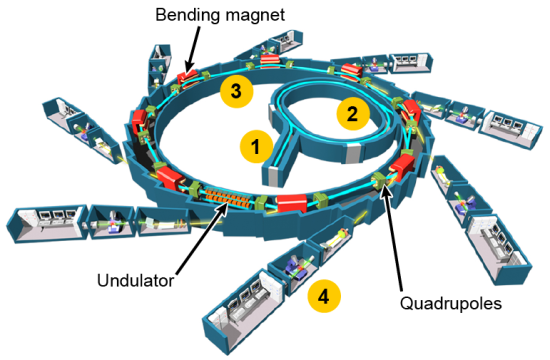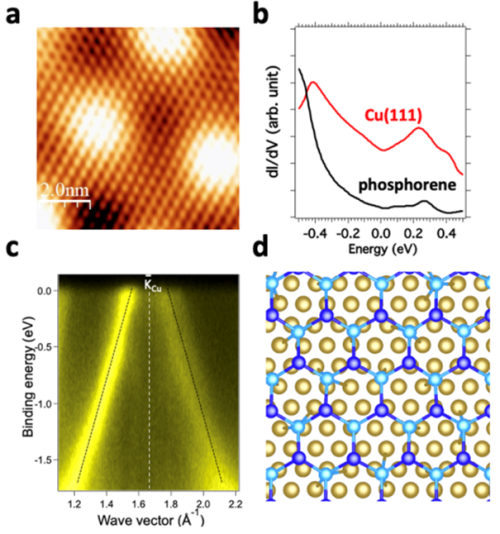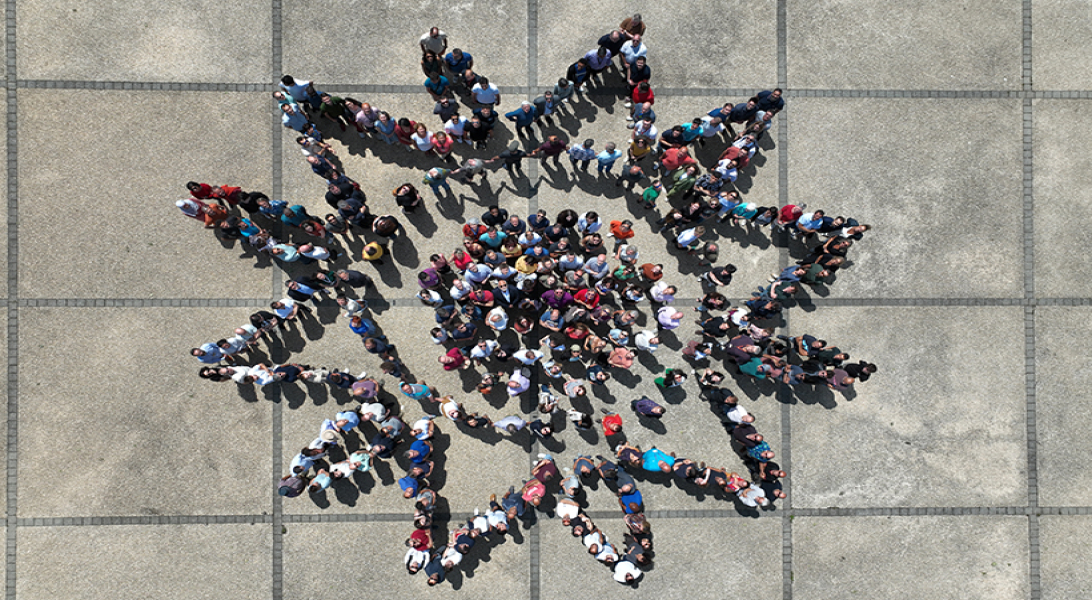High-technology facility, SOLEIL is both an electromagnetic radiation source covering a wide range of energies (from the infrared to the x-rays) and a research laboratory at the cutting edge of experimental techniques dedicated to matter analysis down to the atomic scale, as well as a service platform open to all scientific and industrial communities.
What is SOLEIL?

Very Large Research Infrastructure, synchrotron radiation source, laboratory, particle gas pedal... SOLEIL is all this and more.
Joining us
What is SOLEIL?
SOLEIL is one of France's Très Grandes Infrastructures de Recherche (TGIR) (Very Large Scale Research Infrastructures), i.e. tools with unique features required for high-level research activities, open to any scientific community wishing to use them, and accessible on the basis of project excellence.
As an ultra-high-tech facility, SOLEIL is at once a platform open to all academic and industrial communities, a cutting-edge, multidisciplinary research laboratory, and a place for general public to share scientific culture. SOLEIL, located at the heart of the Paris-Saclay science cluster, is a civil company* jointly founded by CNRS and CEA.
More concretely, SOLEIL produces synchrotron radiation, an extremely bright light that can be used to explore inert or biological matter down to the atomic scale, thanks to particle accelerators (electrons). The light produced covers a wide range of wavelengths (from infrared to X-rays) and is used in experimental facilities known as “beamlines”.
SOLEIL's missions are, as described in the company's charter:
-
To build and operate a synchrotron radiation source and associated experimental facilities
-
To conduct research programs using this synchrotron radiation, and to develop its applications
-
Make its facilities available to interested national, European, and international scientific communities, and encourage their use by them
-
Collaborate and exchange with other synchrotron facilities.
The synchrotron SOLEIL, a unique tool for both academic research and industrial applications, opened to the scientific community in 2008. It is used every year by several thousand researchers from France and abroad, across a wide range of disciplines including physics, biology, chemistry, astrophysics, the environment, and earth sciences. These users are welcomed and accompanied on the beamlines by SOLEIL's scientific and technical teams.
*Civil company: In legal terms, the term civil company refers to any non-commercial company or business. A civil company is governed by the Civil Code, unlike other forms of company subject to commercial law.
How does SOLEIL work?
To understand everything in 3 minutes, watch the video “A source of light for research”.
More details here. Synchrotron radiation is a light emitted by ultra-relativistic electrons, i.e. electrons traveling at close to the speed of light in a vacuum. To meet these conditions and produce high-quality radiation, SOLEIL operates three accelerators.

![]()
The first step is to create the electrons. To do this, several billion of them are stripped from a metal pellet (tungsten) the size of a 2-euro coin, then accelerated and collected in bunches, a few centimetres long, in the LINAC (LINear ACcelerator). At the end of this 16 m-long linear accelerator, the electrons reach a first energy level: 100 MeV. For the electrons to be accelerated, there must be no obstacle in their path, so throughout their odyssey in SOLEIL's accelerators, they circulate in a vacuum chamber. This is a tube less than 10 cm in diameter, in which a very high vacuum is maintained by various pumping devices.
![]()
After this initial acceleration, the electron beam is directed to a second accelerator called the Booster, which increases the energy of the electrons turn after turn, up to SOLEIL's operating value of 2.75 GeV (2.75 billion electron volts). To accelerate, guide and focus the electrons, we use electric and magnetic fields produced by various types of devices. Electrons are accelerated by passing through radio-frequency (RF) cavities, guided by passing through dipoles (or bending magnets), and kept confined in a space comparable to a hair by magnetic systems called quadrupoles and sextupoles.
![]()
The electrons are then “injected and accumulated” in the 354.097-meter circumference storage ring, aptly named as the electrons are aimed to circulate in it for as long as possible: they are stored. However, this is not a ring in the strict sense of the word, but a kind of polygon (with 32 sides, i.e. a dotriacontagon!), where curved sections alternate with straight ones.
At each bend in each of the 32 bending magnets (the angle is 11.25° for each of these dipoles), these ultra-relativistic electrons lose a small fraction of their energy in the form of photons, i.e. light: this is synchrotron radiation, which is emitted forward and in a straight line. Unlike electrons, synchrotron radiation is insensitive to magnetic fields, and propagates through a vacuum chamber towards the beamlines installed around the ring. Between two bending magnets, electrons go “generally” straight ahead, whether in quadrupoles, sextupoles or straight sections with no magnetic field. To produce even more synchrotron radiation, we can install “undulators” in these straight sections, which are a succession of short dipoles with alternating magnetic fields: the electrons passing through them make numerous small zigzag turns over a short distance, emitting light at each bend, before resuming their journey in the storage ring at the undulator exit. The number of photons emitted is thus significantly increased compared to that emitted when crossing a dipole.
After each ring revolution, since they have passed through dipoles and undulators, the electrons have lost some of their initial energy. If nothing is done, the energy decreases lap after lap, and the electrons are eventually lost. To keep them circulating in the storage ring, we need to compensate for their loss of energy at each turn. Thanks to a powerful Radio Frequency (RF) wave, stored in an accelerating cavity through which the electrons pass, they regain their lost energy and start again for another turn. However, this compensation is not enough to keep the number of electrons constant, as electrons are also lost when they collide with each other or with atoms in the residual gas in the vacuum chamber. This is why the entire acceleration process in the LINAC and the Booster is restarted approximately every 2 minutes, but only to replace the number of electrons lost. This “Top-up” ensures that the electron beam intensity remains stable over time, which is essential for the experiments.
![]()
A single electron beam stored in the ring produces the synchrotron radiation used by SOLEIL's 29 beamlines. These 29 research laboratories all operate simultaneously and independently of each other.
Each beamline is generally made up of 3 parts (see diagram):
- an optical part, where a fraction of the radiation is selected and conditioned by optical systems,
- a part dedicated to matter analysis experiments,
- an area for remote control of the various equipment.

The type of light (its “color”, energy, or wavelength) used by each beamline varies from one to the next, from infrared to X-rays (see diagram). Each beamline constitutes a veritable laboratory for biology, chemistry, earth sciences, etc., equipped to prepare and analyze the samples to be studied using the radiation, and to process the information gathered...
The smooth operation of accelerators and beamlines relies on a whole range of teams with a variety of skills: electronics, computing, detectors, optics, vacuum, magnetism, sample preparation and characterization, etc.

To find out more about how SOLEIL works, watch our video “Journey to the heart of the accelerators”.
What is SOLEIL for?
What materials for tomorrow's batteries? How can quantum materials be used to design more compact, energy-efficient computers? How to combat antibiotic-resistant bacteria? How can we preserve plants in the face of climate change? What is the composition of asteroids? What were the metallurgical processes used to make armors in the Middle Ages?
The exceptional characteristics of synchrotron radiation are helping to answer these questions. At SOLEIL, researchers study matter - “samples” - in all its forms, whether liquid, solid or gaseous, under a variety of conditions (high or low temperature and pressure, mechanical constraints, different atmospheres, etc.).
Analysis of the interaction of synchrotron light with matter gives access to numerous properties of the samples studied, right down to the atomic scale:
- The way a sample absorbs light, for example, provides information on its chemical properties (absorption analysis techniques).

- The way a sample deflects light provides information about its structure (scattering and diffraction techniques).

- If light can extract electrons from matter, their characteristics can be used to deduce some of the sample's electronic or magnetic properties (photoemission techniques).

- The intensity of the light produced, and its coherence make it possible to take 2 or 3-dimensional images of samples at very high resolutions.
- The combination of these techniques also makes it possible to map the chemical, structural, electrical and magnetic properties of all kinds of samples in a highly precise and quantitative way.

Each beamline is specialized in one or more of these experimental techniques, just as it is specialized in a range of light “colors” (wavelengths). By studying their samples on several beamlines, researchers have access to complementary information to help them answer their questions.
To find out more about the research carried out at SOLEIL, click here:
- our news
- research examples
- our application videos


